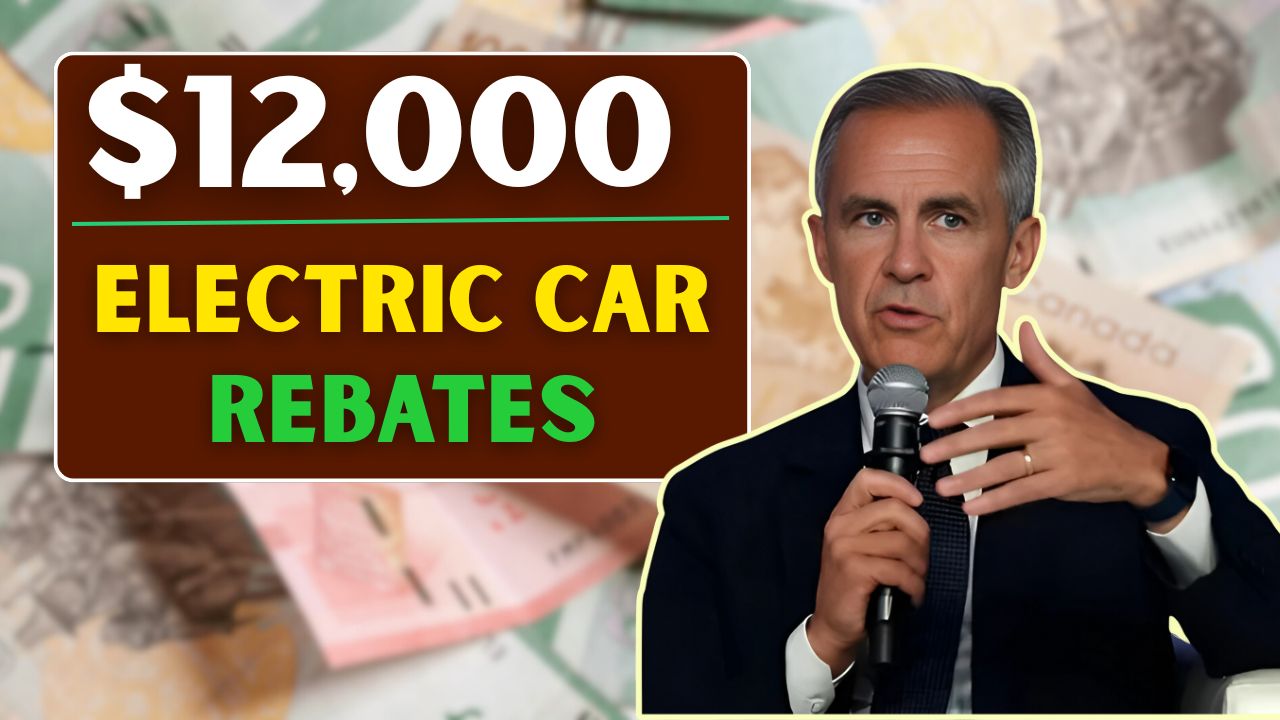In an endeavor to accelerate clean transport adoption, the Government of Canada has amended its EV rebate program for 2025. Canadians can now obtain up to $12,000 in combined federal and provincial rebates when buying a qualifying electric vehicle. This measure is an element of Canada’s climate change strategy to hit net-zero emissions by 2050, with a reduced reliance on fossil fuels.
The federal iZEV (Incentives for Zero-Emission Vehicles) Program now offers higher cash incentives, while some provinces are simultaneously increasing their local EV rebate programs. Alliances of these programs are making electric cars affordable to the average consumer across the country.
Breakdown of the New Rebate Amounts in 2025
The 2025 updated EV rebate structure includes the federal end of the bargain being increased to $7,000 for eligible zero-emission vehicles, compared to $5,000 in previous years. Additionally, the provinces of various Canadian jurisdictions offer provincial rebates that operate additively with the federal amount, thus making the total a combined maximum of $12,000 – depending on where one lives.
Here is a detailed breakdown of the new maximum rebate amounts, by region:
| Province/Territory | Federal Rebate | Provincial Rebate | Total Possible Rebate (2025) |
|---|---|---|---|
| British Columbia | $7,000 | $5,000 | $12,000 |
| Quebec | $7,000 | $7,000 | $14,000* (max cap applies) |
| Ontario | $7,000 | $5,000 | $12,000 |
| Nova Scotia | $7,000 | $3,000 | $10,000 |
| New Brunswick | $7,000 | $4,000 | $11,000 |
| Manitoba, Alberta, Others | $7,000 | $0 | $7,000 |
*Note: In Quebec, combined rebates can be capped based on vehicle MSRP and income thresholds.
Which Vehicles Are Eligible?
The rebate covers both battery electric vehicles (BEVs) and plug-in hybrid electric vehicles (PHEVs) as long as they satisfy certain eligibility criteria set out by the federal government. Aside from other specifications, the key qualifier is the Manufacturer’s Suggested Retail Price (MSRP):
- Passenger cars: MSRP under $55,000 (for base model) and up to $65,000 for higher trims
- Larger vehicles (SUVs, trucks, vans): MSRP under $60,000 (for base model) and up to $70,000 for higher trims
Some of the popular choices are Tesla Model 3 Standard Range, Chevrolet Bolt EV, Hyundai Kona Electric, and Nissan Leaf. New models slated for entry into the Canadian markets in 2025 will very likely qualify too as long as price and emissions standards are met.
How Do I Get My EV Rebate?
The federal rebate is fairly simple to claim. The incentive is applied directly at the point of sale while buying or leasing a qualifying EV from an authorized dealership. Consumers are not required to submit a separate application for the federal amount as it is automatically deducted from their purchase price.
Depending on the province, the provincial rebates may require post-purchase application. Buyers should keep all receipts, proof of registration, and VIN paperwork to submit to their corresponding provincial transportation departments. Timelines and methods differ by province, so make sure to check the requirements in your local area.
Income-Based Top-Ups and Incentives for Used EVs
Some provinces, including Quebec and British Columbia, set out income-tested top-up rebates for qualified households to further increase affordability. These programs may tack on another \$1,000 to \$2,500 depending on household income and vehicle type.
Besides incentives for new vehicles, a good number of jurisdictions have begun giving rebates for buying used EVs too. For instance, British Columbia has a rebate of up to \$3,000 for qualifying used electric vehicles, and Nova Scotia and PEI give smaller amounts for used models as well.
Effect on the Canadian EV Market and Environment
The enhanced rebates shall become a rather potent force to further increase EV adoption in this country. Industry observers foresee the second half of 2025 going to become a spectacularly big sales period for EVs after the implementation of this policy. This stands tall on Canada’s footing to ban the sale of all new gasoline-powered cars by 2035 and most definitely on a larger canvas of reducing transportation-sector emissions.
Environment and Climate Change Canada reports that transportation accounts for almost 25% of the country’s greenhouse gas emissions; passenger vehicles are one of the major sources. By encouraging electric vehicle adoption, the government will try to lessen those emissions and build cleaner cities and healthier communities.
What Consumers Should Do Now
Anyone interested in purchasing an EV in 2025 should start researching qualifying models and reviewing provincial program guidelines. Since funding could run out or be time-sensitive, those who buy sooner would potentially enjoy more benefits. Pre-orders and dealership availability could also be impacted by these rebates as demand rises mid-year.
More importantly, check out the cost savings beyond the rebate itself for fuel and maintenance, tax advantages, and rebates for installing a home charger.
The increased EV rebate for 2025 is an excellent chance for Canadians to take a step toward cleaner transportation. With up to $12,000 in combined support now available, this is one road Canadians can actually afford to go electric.
